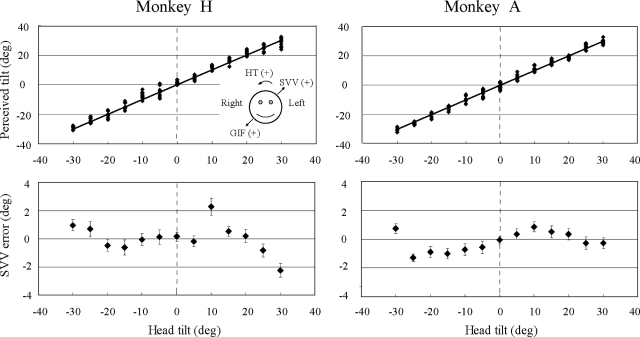FIG. 1.
Subjective visual vertical (SVV) responses during static roll tilt for the 2 monkeys. Top: perceived tilt (PT) plotted against the actual head tilt (HT) for 1 experimental session, where PT = HT + SVV error. Positive values indicate tilts toward the right-ear-down orientation. The solid lines represent perfectly veridical responses (PT = HT). Bottom: SVV error plotted against head tilt for all 8 static roll tilt experimental sessions in each animal. The mean ±1 SE are illustrated, and the bias for each animal (+0.73° for monkey H, +0.1° for monkey A) has been subtracted from the SVV error values. In these and subsequent plots of SVV error vs. head tilt angle, positive SVV errors associated with positive (rightward) head tilts indicate overestimation of tilt angle as do negative SVV errors associated with negative (leftward) head tilts. Inset: sign orientation for HT, SVV, and gravito-inertial force (GIF) orientation. Head tilts toward the right-ear-down orientation are positive, GIF shifts toward the right ear (as would occur with a rightward head tilt) are positive, and SVV deviations toward the left are positive.

